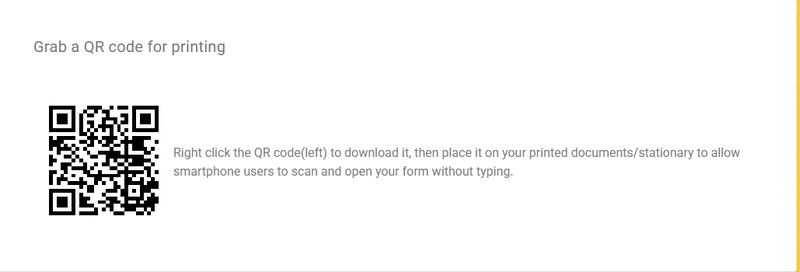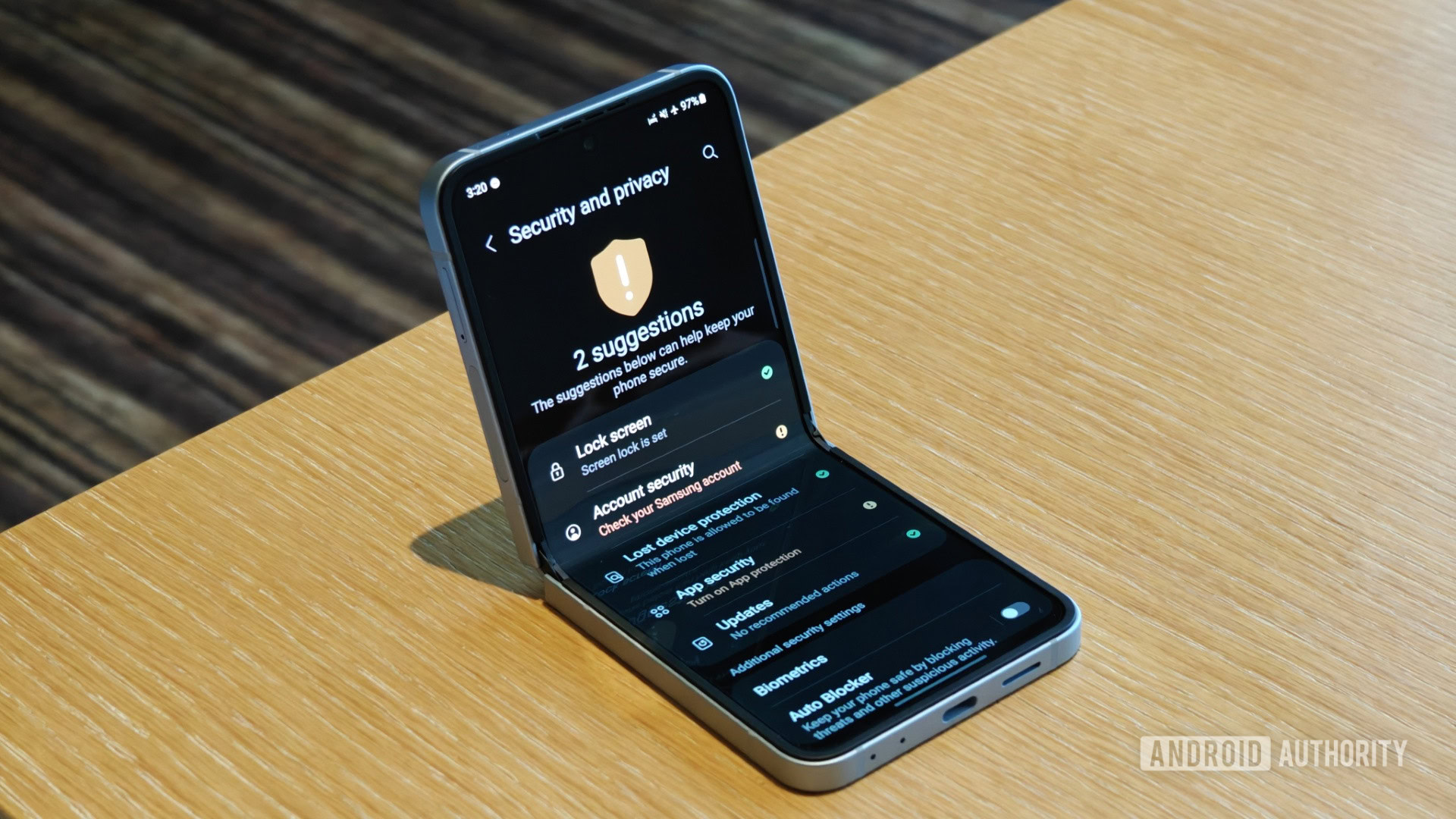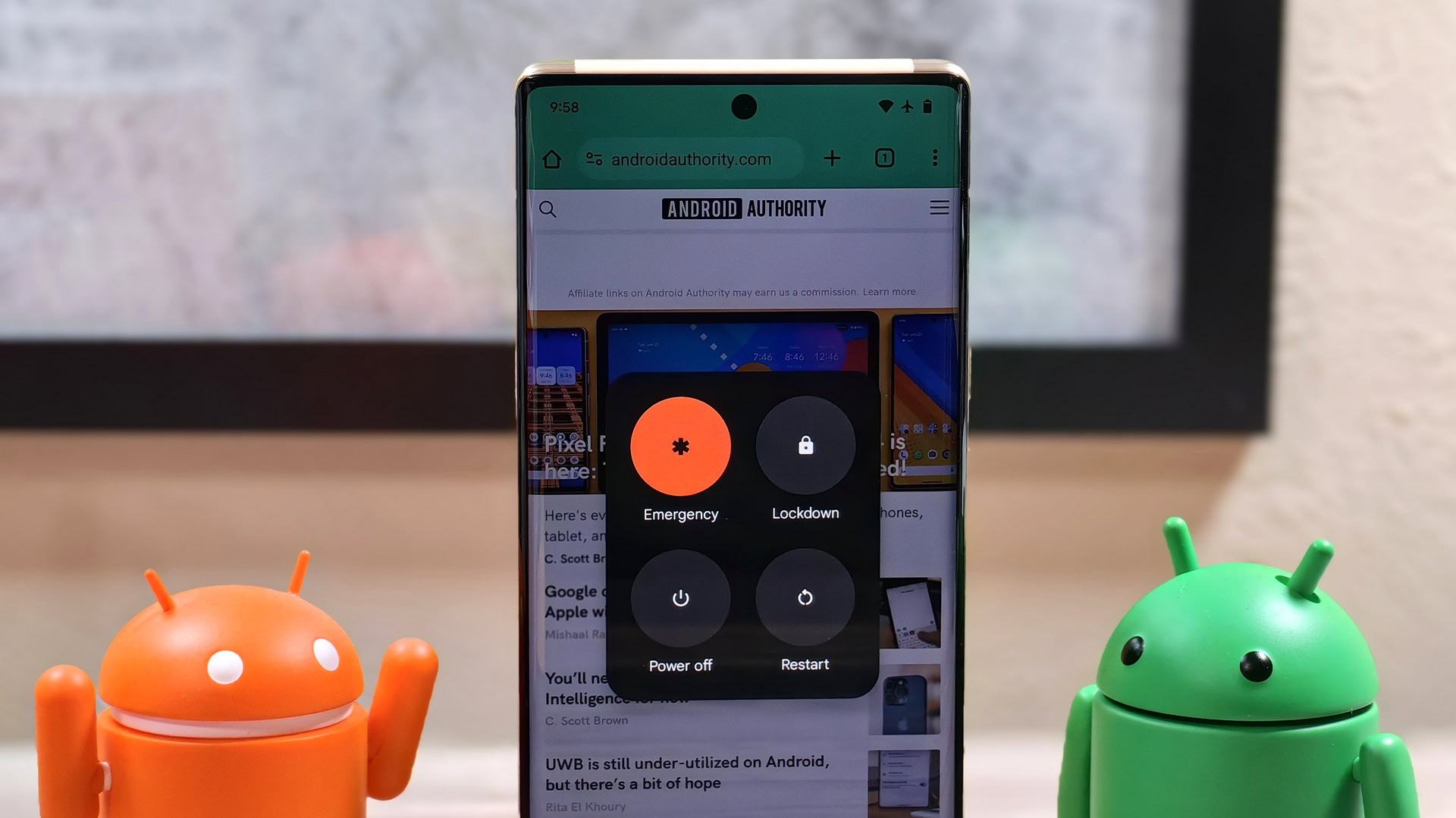A Beginner’s Guide to Getting Started with Prompt Templates in LangChain JavaScript
Having an AI assistant that understands exactly what you need and responds precisely sounds amazing, right? But here’s the catch: without the right instructions, even the smartest AI can stumble. Getting AI to respond the way you want can feel like an art form. Sometimes, it delivers spot-on answers. Other times, it completely misses the mark. The difference? How you structure your prompts. That’s where Prompt Templates in LangChain come in! Before we dive in, here’s something you’ll love: We are currently working on Langcasts.com, a resource crafted specifically for AI engineers, whether you're just getting started or already deep in the game. We'll be sharing guides, tips, hands-on walkthroughs, and extensive classes to help you master every piece of the puzzle. If you’d like to be notified the moment new materials drop, you can subscribe here to get updates directly. LangChain is transforming the way developers interact with large language models (LLMs) by providing a more intelligent approach to crafting prompts. Instead of feeding AI free-form text and hoping for the best, Prompt Templates act as a guide, shaping the model’s responses with structure, clarity, and context. Think of it as designing a conversation blueprint. You define placeholders for dynamic inputs, set the tone, and let the AI generate responses that make sense. Whether you're building chatbots, summarizing text, or generating creative content, Prompt Templates are essential for getting precise and reliable results. In this guide, we’ll discuss what you need to know about using Prompt Templates in LangChain JavaScript, from setting up your first template to exploring different types like String Prompt Templates, Chat Prompt Templates, and MessagesPlaceholder. By the end, you’ll not only understand how they work but also be able to craft prompts that make your AI interactions seamless and effective. Let's get started!. Understanding Prompt Templates AI models are incredibly powerful, but they don’t read minds, at least not yet. They rely on well-structured instructions to generate meaningful responses. This is where Prompt Templates come into play. What Are Prompt Templates? Prompt Templates are predefined structures that shape how user input is presented to a language model. Instead of crafting prompts from scratch each time, you use a template with placeholders that dynamically insert relevant information. This ensures consistency, clarity, and better AI-generated responses. Think of it like a fill-in-the-blank form for AI. Instead of writing a brand-new request every time, you use a structured prompt that adapts based on input. For example: import { PromptTemplate } from "@langchain/core/prompts"; const promptTemplate = PromptTemplate.fromTemplate( "Tell me a joke about {topic}" ); await promptTemplate.invoke({ topic: "cats" }); Here, {topic} is a placeholder that gets replaced with actual user input. When executed with { topic: "cats" }, the model receives the prompt: "Tell me a joke about cats." How Prompt Templates Help Structure User Input for LLMs Language models perform best when given clear, well-structured instructions. Without a defined format, AI responses can be unpredictable. Prompt Templates act as a guide, helping shape the input into something the model can process efficiently. Key benefits include: ✔️ Consistency – Ensures AI responses follow a predictable format. ✔️ Flexibility – Allows dynamic user input while keeping structure intact. ✔️ Efficiency – Saves time by reusing well-formed prompts instead of manually writing new ones. How Prompt Templates Work In LangChain, prompts don’t just return plain text, they produce a PromptValue. This PromptValue serves as an intermediate step, allowing you to seamlessly switch between raw strings and structured messages. For example, the above Prompt Template returns: StringPromptValue { value: 'Tell me a joke about cats' } This means the response can be easily converted into a string or adapted into a list of messages for chat-based models. This flexibility makes Prompt Templates a core feature when working with AI-driven applications. By now, you should have a solid understanding of Prompt Templates and why they’re essential for working with LangChain. Let's explore the different types of prompt templates available. Types of Prompt Templates Building on our understanding of prompt templates, it's important to note that LangChain offers different types tailored for various use cases. Depending on your application, you can choose from: String Prompt Templates When working with simple, one-line prompts that require minimal formatting, String Prompt Templates provide an efficient solution. These templates allow you to define a single string with placeholders that can be dynamically replaced with user input, making them ideal for straightforward tasks where the output is

Having an AI assistant that understands exactly what you need and responds precisely sounds amazing, right? But here’s the catch: without the right instructions, even the smartest AI can stumble. Getting AI to respond the way you want can feel like an art form. Sometimes, it delivers spot-on answers. Other times, it completely misses the mark. The difference? How you structure your prompts. That’s where Prompt Templates in LangChain come in!
Before we dive in, here’s something you’ll love:
We are currently working on Langcasts.com, a resource crafted specifically for AI engineers, whether you're just getting started or already deep in the game. We'll be sharing guides, tips, hands-on walkthroughs, and extensive classes to help you master every piece of the puzzle. If you’d like to be notified the moment new materials drop, you can subscribe here to get updates directly.
LangChain is transforming the way developers interact with large language models (LLMs) by providing a more intelligent approach to crafting prompts. Instead of feeding AI free-form text and hoping for the best, Prompt Templates act as a guide, shaping the model’s responses with structure, clarity, and context.
Think of it as designing a conversation blueprint. You define placeholders for dynamic inputs, set the tone, and let the AI generate responses that make sense. Whether you're building chatbots, summarizing text, or generating creative content, Prompt Templates are essential for getting precise and reliable results.
In this guide, we’ll discuss what you need to know about using Prompt Templates in LangChain JavaScript, from setting up your first template to exploring different types like String Prompt Templates, Chat Prompt Templates, and MessagesPlaceholder. By the end, you’ll not only understand how they work but also be able to craft prompts that make your AI interactions seamless and effective. Let's get started!.
Understanding Prompt Templates
AI models are incredibly powerful, but they don’t read minds, at least not yet. They rely on well-structured instructions to generate meaningful responses. This is where Prompt Templates come into play.
What Are Prompt Templates?
Prompt Templates are predefined structures that shape how user input is presented to a language model. Instead of crafting prompts from scratch each time, you use a template with placeholders that dynamically insert relevant information. This ensures consistency, clarity, and better AI-generated responses.
Think of it like a fill-in-the-blank form for AI. Instead of writing a brand-new request every time, you use a structured prompt that adapts based on input. For example:
import { PromptTemplate } from "@langchain/core/prompts";
const promptTemplate = PromptTemplate.fromTemplate(
"Tell me a joke about {topic}"
);
await promptTemplate.invoke({ topic: "cats" });
Here, {topic} is a placeholder that gets replaced with actual user input. When executed with { topic: "cats" }, the model receives the prompt:
"Tell me a joke about cats."
How Prompt Templates Help Structure User Input for LLMs
Language models perform best when given clear, well-structured instructions. Without a defined format, AI responses can be unpredictable. Prompt Templates act as a guide, helping shape the input into something the model can process efficiently.
Key benefits include:
✔️ Consistency – Ensures AI responses follow a predictable format.
✔️ Flexibility – Allows dynamic user input while keeping structure intact.
✔️ Efficiency – Saves time by reusing well-formed prompts instead of manually writing new ones.
How Prompt Templates Work
In LangChain, prompts don’t just return plain text, they produce a PromptValue. This PromptValue serves as an intermediate step, allowing you to seamlessly switch between raw strings and structured messages.
For example, the above Prompt Template returns:
StringPromptValue {
value: 'Tell me a joke about cats'
}
This means the response can be easily converted into a string or adapted into a list of messages for chat-based models. This flexibility makes Prompt Templates a core feature when working with AI-driven applications.
By now, you should have a solid understanding of Prompt Templates and why they’re essential for working with LangChain. Let's explore the different types of prompt templates available.
Types of Prompt Templates
Building on our understanding of prompt templates, it's important to note that LangChain offers different types tailored for various use cases. Depending on your application, you can choose from:
String Prompt Templates
When working with simple, one-line prompts that require minimal formatting, String Prompt Templates provide an efficient solution. These templates allow you to define a single string with placeholders that can be dynamically replaced with user input, making them ideal for straightforward tasks where the output is a concise instruction or request.
Consider a scenario where you need to generate a prompt that tells an AI to "Tell me a joke about {topic}". Instead of manually constructing the prompt every time, you can create a reusable template with a placeholder for {topic}. When you invoke the template with a specific value, such as "cats", the placeholder is automatically replaced, resulting in the complete prompt: "Tell me a joke about cats." This approach not only saves time but also ensures that your prompts are consistently structured.
Here’s a simple code example that demonstrates the creation and use of a String Prompt Template in LangChain JavaScript:
import { PromptTemplate } from "@langchain/core/prompts";
// Define the template with a placeholder for the topic.
const promptTemplate = PromptTemplate.fromTemplate(
"Tell me a joke about {topic}"
);
// Invoke the template by providing a value for the placeholder.
await promptTemplate.invoke({ topic: "cats" });
In this example, the fromTemplate method is used to create a new template that includes the {topic} placeholder. When you call the invoke method with the object { topic: "cats" }, the template fills in the placeholder, producing a StringPromptValue that contains the fully formatted string. This value is then ready to be passed to a language model.
By automating the substitution of placeholders with actual values, String Prompt Templates eliminate the potential for errors and inconsistency that can arise from manually assembling strings. This makes them particularly useful for applications that require clear and concise prompts, such as generating jokes, quick summaries, or any other scenario where a single-line instruction is sufficient.
Chat Prompt Templates
Expanding on the basics of prompt templates, Chat Prompt Templates take the concept a step further by accommodating multi-message interactions. They’re designed for scenarios where a single prompt isn't enough, especially in conversational AI applications where context and multiple speaker roles are crucial.
A ChatPromptTemplate lets you build a conversation by specifying a sequence of messages. Typically, you'll define messages from different roles (like system, user, or even assistant) that together form the overall prompt. This structure is especially useful for chatbots, customer service applications, and any situation where the AI needs to manage a dialogue with context.
Consider the following code example, which constructs a chat-based prompt using both system and user messages:
import { ChatPromptTemplate } from "@langchain/core/prompts";
// Create a chat prompt template with a system message and a user message that includes a placeholder.
const promptTemplate = ChatPromptTemplate.fromMessages([
["system", "You are a helpful assistant"],
["user", "Tell me a joke about {topic}"],
]);
// Invoke the template with a specific topic value.
await promptTemplate.invoke({ topic: "cats" });
In this example, the template is built from an array of messages:
- The system message sets the context by establishing the assistant’s role.
- The user message includes a placeholder (
{topic}) that is dynamically replaced when the template is invoked.
When executed with { topic: "cats" }, the ChatPromptTemplate produces a ChatPromptValue that contains a structured conversation. This means the AI receives a formatted list of messages, each with its respective role and content. This structure not only maintains clarity but also ensures that each part of the conversation is correctly interpreted by the language model.
By leveraging Chat Prompt Templates, developers can create rich, context-aware dialogues that are far more effective than single-line prompts, paving the way for more interactive and engaging AI applications. Next, we'll explore the MessagesPlaceholder, a tool that further enhances how you manage dynamic message lists within these templates.
MessagesPlaceholder
While Chat Prompt Templates are powerful for creating structured dialogues, there are scenarios where you need even more flexibility, specifically when the number or nature of messages isn’t fixed. This is where MessagesPlaceholder comes into play.
The MessagesPlaceholder enables you to dynamically insert a list of messages into a chat prompt template. Instead of hardcoding every message, you can designate a spot in your conversation where multiple messages, such as user inputs, can be slotted in at runtime. This is especially useful when the conversation may vary in length or when you want to allow for dynamic message flows without rebuilding the entire prompt structure.
For example, consider a scenario where your prompt starts with a fixed system message, but you want to add a variable number of user messages later on. By using MessagesPlaceholder, you can create a template that reserves a spot for these dynamic messages:
import {
ChatPromptTemplate,
MessagesPlaceholder,
} from "@langchain/core/prompts";
import { HumanMessage } from "@langchain/core/messages";
// Create a chat prompt template with a fixed system message and a dynamic messages placeholder.
const promptTemplate = ChatPromptTemplate.fromMessages([
["system", "You are a helpful assistant"],
new MessagesPlaceholder("msgs"),
]);
// Invoke the template with a list of user messages.
await promptTemplate.invoke({
msgs: [new HumanMessage("Hello!"), new HumanMessage("Can you help me?")]
});
In this example, the MessagesPlaceholder, identified by msgs marks the position where the list of user messages will be inserted when the template is invoked. The result is a structured conversation that begins with the system message and continues with each of the provided user messages.
If you prefer not to use the explicit MessagesPlaceholder class, you can achieve a similar effect by incorporating a placeholder directly into your message template. This alternative method uses a placeholder string (e.g., {msgs}) to indicate where the messages should go:
import { ChatPromptTemplate } from "@langchain/core/prompts";
// Create a chat prompt template using a placeholder in a message.
const promptTemplate = ChatPromptTemplate.fromMessages([
["system", "You are a helpful assistant"],
["placeholder", "{msgs}"], // This placeholder indicates where the dynamic messages will be inserted.
]);
// Invoke the template with the same list of user messages.
await promptTemplate.invoke({
msgs: [new HumanMessage("Hello!"), new HumanMessage("Can you help me?")]
});
Both approaches let you dynamically insert a list of messages into your chat prompt, ensuring that your template can adapt to different conversation lengths and content. This versatility makes MessagesPlaceholder a powerful tool for building rich, interactive chat experiences that adjust to the needs of your application. Next, we’ll explore how to set up LangChain JavaScript and start using these templates in your projects.
A Simple Demo: Setting Up LangChain with JavaScript
Before diving into crafting dynamic prompts, you'll need to set up LangChain in your JavaScript or TypeScript project. The installation process is straightforward, ensuring that you can quickly integrate LangChain’s powerful prompt templating features into your application.
Start by installing the LangChain package via npm or yarn. In your terminal, run:
npm install @langchain/core
or
yarn add @langchain/core
Once installed, you can import the necessary modules to work with Prompt Templates. For example, if you’re planning to use a String Prompt Template, you might import it as follows:
import { PromptTemplate } from "@langchain/core/prompts";
If you’re working with chat-based prompts, you’ll similarly import the ChatPromptTemplate and any other related modules:
import { ChatPromptTemplate } from "@langchain/core/prompts";
With these modules in place, setting up your first prompt template is simple. Here’s a basic example that demonstrates how to create and invoke a String Prompt Template:
// Import PromptTemplate from LangChain
import { PromptTemplate } from "@langchain/core/prompts";
// Define a prompt that includes a placeholder for a user's role
const promptTemplate = PromptTemplate.fromTemplate(
"Give a short motivational quote for someone working as a {profession}."
);
// Supply the role dynamically to generate a personalized quote
const result = await promptTemplate.invoke({ profession: "frontend developer" });
// Log the result
console.log(result.value);
// Example Output: "As a frontend developer, your code shapes the user’s first impression. Keep building boldly!"
This example shows how to import the module, create a template with a dynamic placeholder, and then generate a fully formatted prompt by providing the appropriate input. The result is a clean, ready-to-use prompt that can be passed directly to a language model.
By following these simple steps, you’re well on your way to integrating LangChain’s prompt templating features into your project, enabling more structured and effective interactions with AI.
Best Practices for Working with Prompt Templates
When using prompt templates in LangChain, following a few best practices can make a big difference in the clarity, reliability, and overall effectiveness of your AI interactions.
1. Keep Prompts Clear and Structured
The goal of a prompt is to guide the language model toward generating a relevant and accurate response. To achieve this, your prompts should be easy to read and free from ambiguity. Avoid complex sentence structures or unclear phrasing. Instead, use concise, directive language that communicates the intent clearly. This not only helps the model understand what you want but also makes your code easier for others (or your future self) to maintain.
2. Handle Variables Thoughtfully
Variables in prompt templates are powerful, but only when used correctly. Always use clear and descriptive variable names that reflect the data they hold (e.g., {userQuestion} instead of {x}). Make sure the data you pass into these variables is clean, properly formatted, and of the expected type. This reduces the risk of unexpected outputs or errors in generation. Consider setting default values or validations for inputs where applicable.
3. Test and Debug Prompt Segments Independently
Debugging prompt templates can be tricky, especially when dealing with dynamic inputs or multi-part message structures. To simplify the process, test each section of your prompt individually. For example, if you're using a ChatPromptTemplate with multiple messages, try invoking just one message template at a time to isolate issues. Print or log the intermediate PromptValue results to check how your inputs are being formatted before they're passed to the model.
4. Adopt Consistent Naming and Documentation
Good naming conventions and inline comments go a long way in making your templates reusable and easy to understand. Stick to a consistent style for variable names, and consider documenting what each section of your template is intended to do. This is especially helpful when working in teams or revisiting your code after some time.
5. Iterate and Experiment
Prompt engineering is part art, part science. Don’t be afraid to tweak your templates and experiment with different phrasings, structures, or order of messages. Often, small changes can significantly improve the model’s responses. Keep notes or version histories of what works best for specific use cases to build a library of effective templates over time.
In this guide, we've unlocked the essentials of LangChain's prompt templates, from the simplicity of String Prompt Templates to the dynamic capabilities of Chat Prompt Templates and MessagesPlaceholder. These tools empower you to craft precise, structured prompts that guide AI interactions with clarity and consistency.
Experiment with different types of prompt templates to see how they can transform your projects. Whether you're developing chatbots, building creative AI applications, or streamlining user interactions, there's a template approach that fits your needs. Dive in, tweak the variables, test your templates, and harness the power of LangChain to elevate your AI-driven solutions.
Build with clarity. Build with confidence. Build seamlessly.










































































































































































![[The AI Show Episode 144]: ChatGPT’s New Memory, Shopify CEO’s Leaked “AI First” Memo, Google Cloud Next Releases, o3 and o4-mini Coming Soon & Llama 4’s Rocky Launch](https://www.marketingaiinstitute.com/hubfs/ep%20144%20cover.png)


































































































































































































![Blue Archive tier list [April 2025]](https://media.pocketgamer.com/artwork/na-33404-1636469504/blue-archive-screenshot-2.jpg?#)


































.png?#)








.png?width=1920&height=1920&fit=bounds&quality=70&format=jpg&auto=webp#)



























.webp?#)

























































































![PSA: It’s not just you, Spotify is down [U: Fixed]](https://i0.wp.com/9to5mac.com/wp-content/uploads/sites/6/2023/06/spotify-logo-2.jpg?resize=1200%2C628&quality=82&strip=all&ssl=1)
![[Update: Optional] Google rolling out auto-restart security feature to Android](https://i0.wp.com/9to5google.com/wp-content/uploads/sites/4/2025/01/google-play-services-2.jpg?resize=1200%2C628&quality=82&strip=all&ssl=1)












![Apple Releases iOS 18.4.1 and iPadOS 18.4.1 [Download]](https://www.iclarified.com/images/news/97043/97043/97043-640.jpg)
![Apple Releases visionOS 2.4.1 for Vision Pro [Download]](https://www.iclarified.com/images/news/97046/97046/97046-640.jpg)
![Apple Vision 'Air' Headset May Feature Titanium and iPhone 5-Era Black Finish [Rumor]](https://www.iclarified.com/images/news/97040/97040/97040-640.jpg)


































![[Update: Trump Backtracks]The U.S. Just Defunded a Key Security Database, And Your Android Phone Could Pay the Price](https://www.androidheadlines.com/wp-content/uploads/2025/03/Android-logo-AM-AH.jpg)

































































































